Surf fishing for cod is one of the most rewarding forms of fishing, but you need to get all the small factors working in your favour to be successful. Often simple timing is the key to catching and having an overall plan in place to achieve your target.
When to catch
You can argue that the surf cod season starts in October, but it's November in the southern half of the UK before prospects significantly improve. Before that, the chances of fish can be low, especially if the weather patterns are relatively calm. December is a good month, as is January, but by the end of January their numbers quickly thin out as they head for deeper water. It’s a short season in real terms.
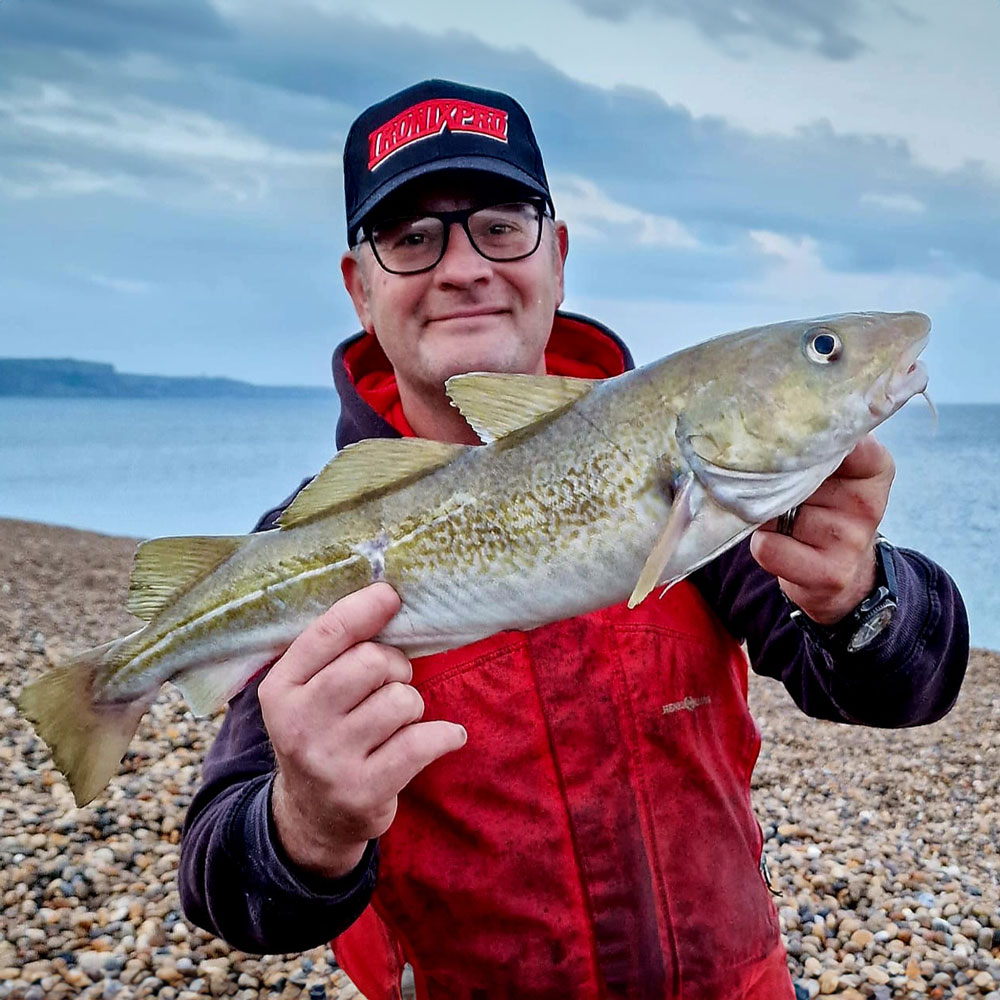
Where to catch
Cod resident on surf beaches will be drawn to any patches of rougher ground which hold crabs and small fish, and these also act as collection areas for any food washed free from the sand and then borne along by the tidal currents. The ends of beaches where sand meets rocks or cliffs are also top spots to fish.
If there’s no obvious rough ground, target the deeper gutters and gullies that invariably run parallel along these beaches. Moreover, areas where there is standing water at low tide, which suggests a dished out deeper area that will see food washed into it.
Don’t be put off if you can’t identify any obvious ground feature, the cod will run the surf tables looking for washed out food but tend to be out beyond the obvious white water in the flatter darker coloured water that identifies more depth.
Weather and tides
Cod are drawn into the shore during rough seas and stronger onshore winds. The rougher seas and big waves scour food out from the sand and wash mussels and crab free of the rough ground. Pay attention to the weather forecasts and look for the deep depressions forming out in the Atlantic, tracking towards the UK. These will create big seas as they approach with strong winds, but as the eye passes over you can get a brief few hours when the winds drop, but the seas remain rough. These are the perfect conditions. Likewise, after a gale has passed through and the seas start to ease is always a good time to fish.
Night tides will invariably produce the better catches, and like so many other fishing situations, picking a tide that starts to flood in darkness will massively increase your chances. Daylight can produce, but only if the sea is well coloured and carrying suspended sediment.
By far, the best tides are the middle-sized tides but especially the biggest spring tides. As these increase in size, so the chances of cod increase. As soon as the tides peak and start to fall in height, then gradually cod catches decrease. The optimum tides are during the three days before the biggest tide of that fortnightly cycle.
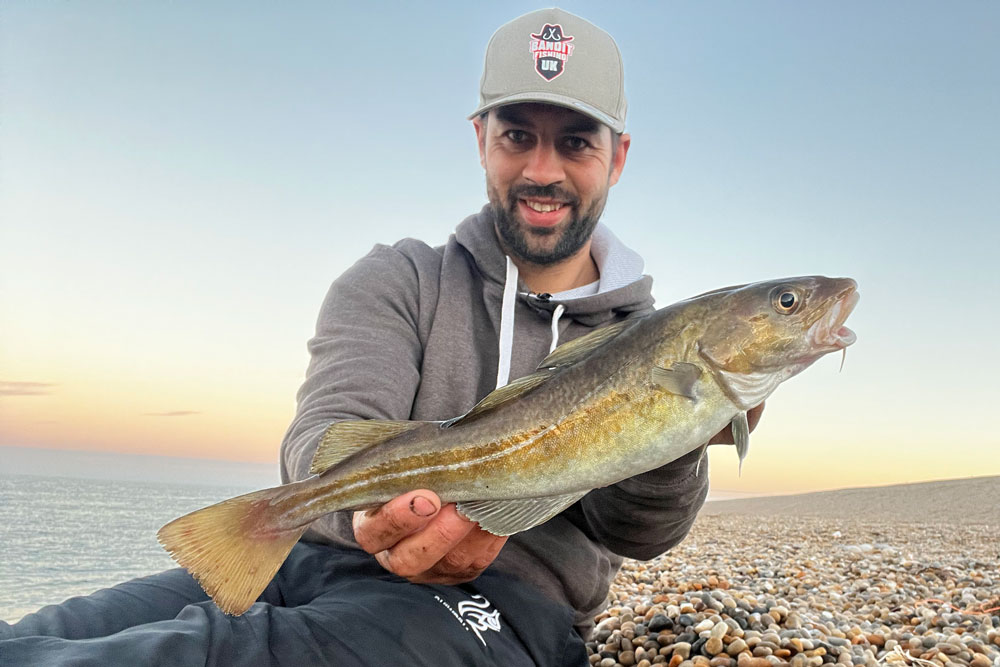
Tackle
Rods between 12ft and 15ft offer the best option and need to be rated to cast 5-7oz. Powerful rods like these will cope with rough seas, cast big baits, and have the power to land fish in heavy surfs. Rods such as the Tronixpro Xenon Power and Banzai Power are ideal, as well as the Competition Naga. Match these to a multiplier reel, such as the Banzai Tournament Mono Mag holding 20lb of Blaze Mono line and a 60lb Xenon Leader, or an 8000 sized fixed spool reel loaded with 30lb Tronixpro X8 Power Braid and a 60/80lb braid shock leader.
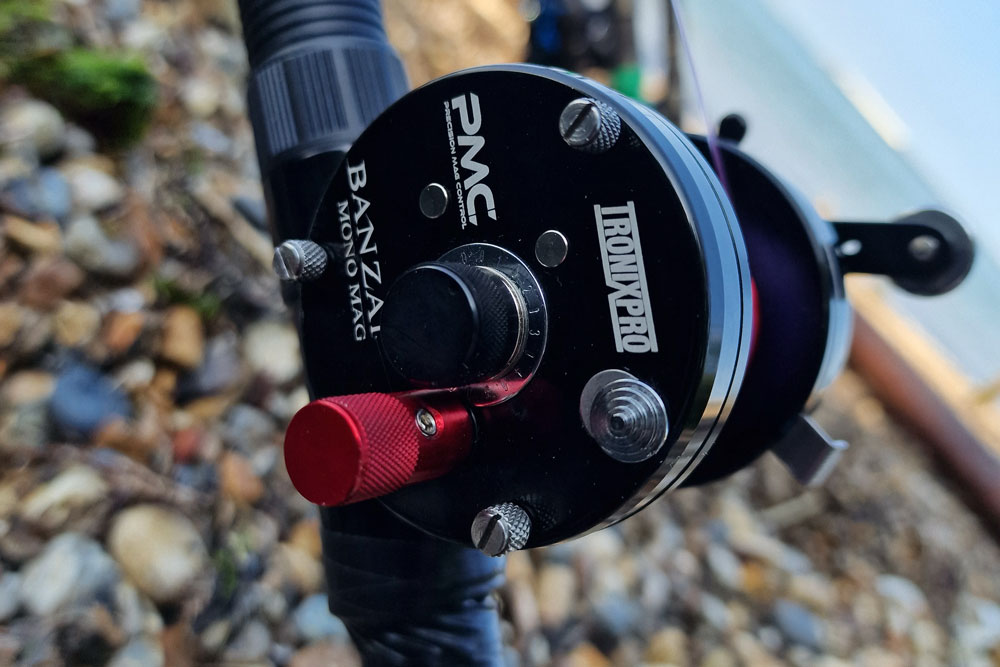
The most successful rig for long-range general surf fishing for cod is the pulley rig.
- Begin with 50-inches of 60lb Xenon Leader.
- To one end, tie on a Big Bait Casting Snap.
- Slide on a 5mm bead, a Tronixpro Pulley Rig Bead and another 5mm bead.
- Measuring up from the tag end of mono 22-inches, tie in a figure-of-eight knot. This stops the beads and pulley rig bead sliding any further.
- To the tag end of the mono, slide on a Tronixpro Crimp, a 3mm bead and an 8mm bead, then the hook. Crimp the crimp lightly in place on the mono, just enough so that under heavy finger pressure you can slide it on the line. This bead and crimp arrangement forms a bait stop and avoids the bait blowing back up the line due to casting pressure.
- Now tie on a size 4/0 Tronixpro Beast Uptide hook. Alternatively, use two 4/0 hooks one above the other to create a 2-hook Pennel rig. The top hook is simply slid onto the hook length by the eye, then secured in place by wrapping the hook length around the shank three or four times. If you use the 2-hook pennel arrangement, you can dispense with no 5, the bait stop sequence.
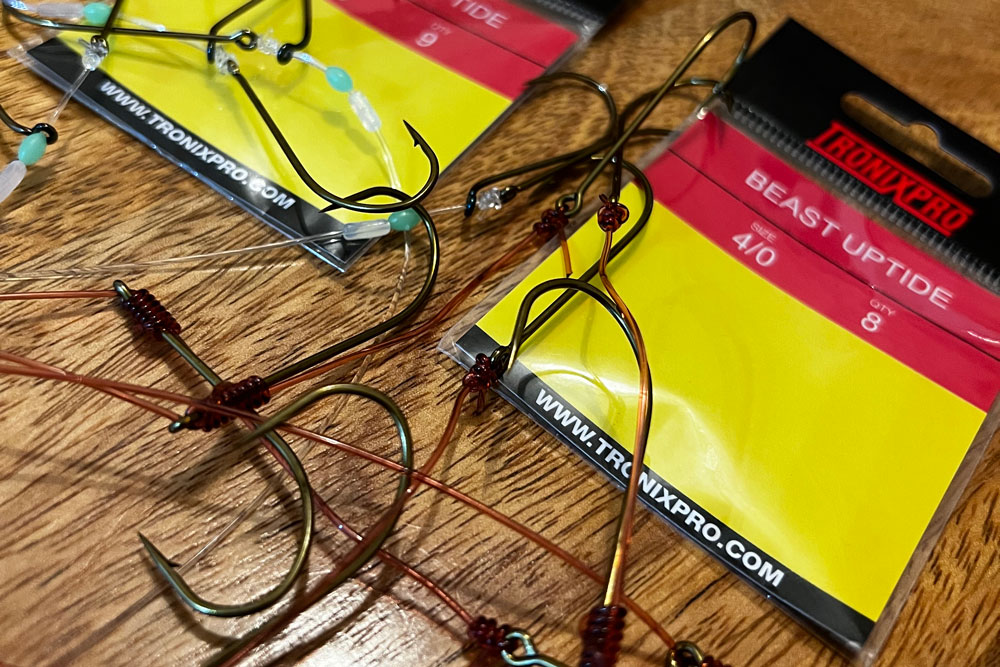
Use this rig with release wired leads to aid self-hooking and to anchor the rig hard on the seabed where the cod are hunting. A well anchored bait is also easier to track down in rough seas.
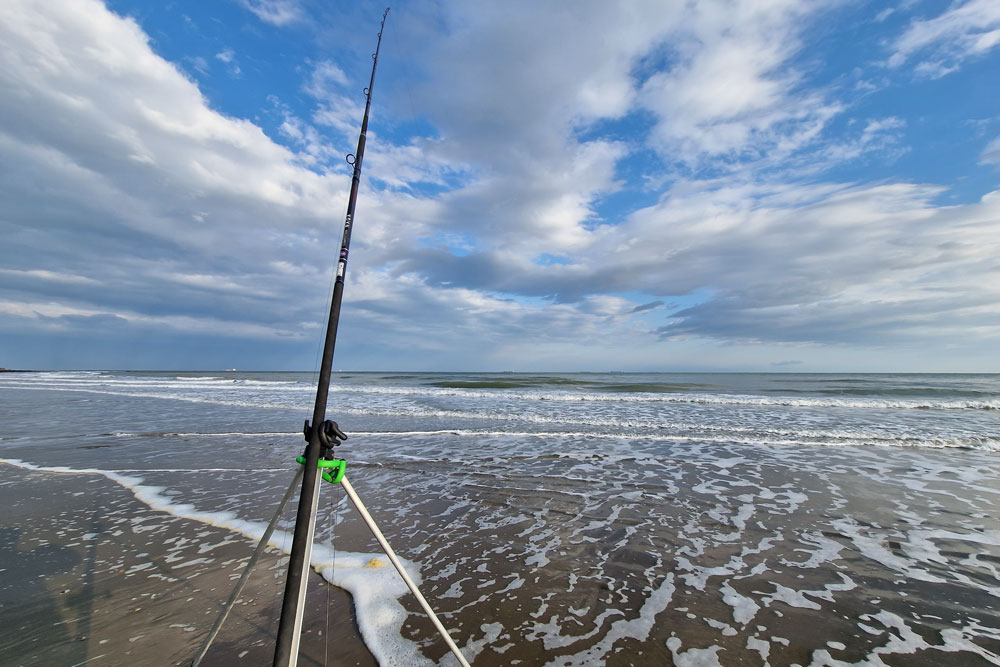
Baits
The most used and therefore the most successful bait is lugworm, either back lug or blow lug. A good option is to use black lug tipped with two or three blow lug. A lug/king ragworm combination bait is good, and try adding a sliver of squid to the baits to add colour and movement. Mussel baits will work, even in the surf, as will whole squid. Good baits to tip the worm off with are razorfish, mussel, and crab.
Baits need to be about 6-inches in length, sausage shaped, well wrapped in bait elastic to maintain, and give an even wash out of scent.
Tactics
On shallow surf beaches, expect the cod to be mostly at longer range, say 75-yards or more. The further you can cast, the better chance you have, generally speaking. That said, some beaches will see the cod just 30-yards out in heavily coloured water with a settling sea and smaller wave tables. This is where two rods come in as you can fish one at range, one close in, then bring them gradually together to find the feeding band.
Set your rods up at a 30-degree angle in the rod rest and as high as you can get it. This gets the line further out in the surf and will help avoid any floating weed that tends to be close in.
Cod bites see the rod either register a couple of knocks then pull over, or they just hit it and power away. In both cases, pick up the rod, wind in the slack line until you feel the weight of the fish, then let the tightening line pull the hook home. Slack line bites can occur, and these need the same approach, but strike when you feel the weight of the fish as slack liners may not be so well hooked.
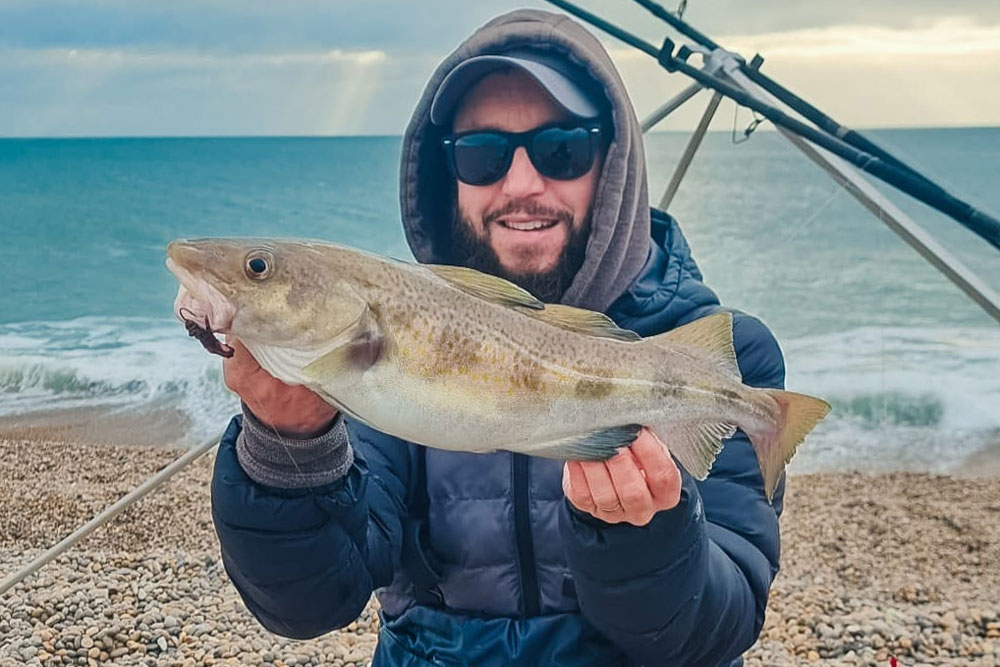
Change your baits every 15-minutes. Cod respond best to a strong scent trail. Baits left out over 20-minutes have a massively reduced scent lane, and this makes it much harder for fish to locate it.
It’s worth having at least one spare hook trace ready baited and hung on your rod rest, and attach your rigs using a casting clip attached to the end of the shock leader. If you catch one cod, the chances are there are more out there, and getting a fresh bait out as quickly as you can by clipping on a new one and casting before you deal with the just caught fish can help increase your chances of further action.
On dark nights and in rough weather, the addition of a bright-coloured shock leader offers a sight target for you to locate fish in the surf using your headlight when landing fish.


